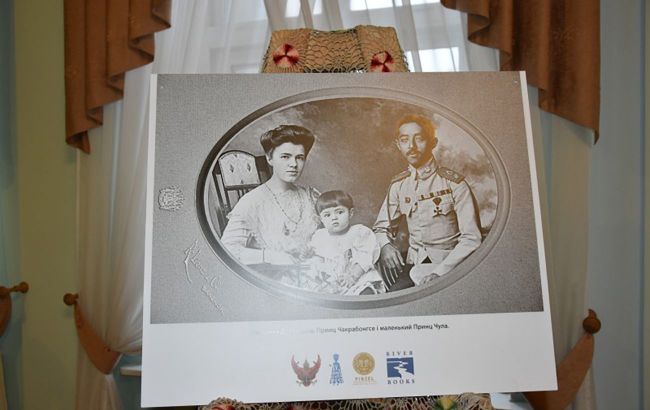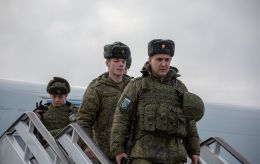Love story turned legend: How Ukrainian from Kyiv became Siam's princess
 How a Ukrainian woman from Podil became the princess of Siam (photo: lutskrada.gov.ua)
How a Ukrainian woman from Podil became the princess of Siam (photo: lutskrada.gov.ua)
At the beginning of the 20th century, a Ukrainian woman from Kyiv found herself at the court of the King of Siam, now modern-day Thailand. What was her journey from the streets of Podil to becoming a princess and the bride of the king's brother?
From Kyiv's Podil to the royal palace
In the early 20th century, Kateryna Desnytska from Kyiv lived a story that today could easily become a movie. She was born in 1886 into the family of a lawyer, received an excellent education, and spoke several languages. Her contemporaries described her as educated, beautiful, and independent.
Kateryna's father died when she was only two years old. She lived with her mother and her siblings—both biological and step—at that time in Lutsk. After her husband's death, her mother sold all the family property and moved with the children to Kyiv. The older stepbrothers enrolled at Kyiv University, while the younger ones attended a gymnasium.
Kateryna studied at the best girls' gymnasium in the capital, near Khreshchatyk. In 1903, her mother died of cancer.
During the Russo-Japanese War (1904-1905), Kateryna volunteered as a Red Cross nurse at the front. There, in Manchuria, fate brought her together with Prince Chakrabon of Phitsanulok (Sophas Purachatra), brother of the King of Siam (now Thailand), Rama V Chulalongkorn.
Love that crossed continents
Their meeting changed everything. The young prince, educated in Great Britain and known for his progressive worldview, fell in love with the Ukrainian woman. Despite all the cultural, religious, and diplomatic obstacles, they secretly married in 1906 at the Greek Church of the Holy Trinity in the Pera district of Istanbul.
The couple spent their honeymoon in Egypt. However, the prince could not return home with an unknown woman, especially a European. He left his young wife in Singapore and went to Siam. The king gifted the prince a new residence, Paruskavan Palace, and that's where the prince eventually brought his beloved.
At first, the royal family saw the marriage as a misalliance, and Desnytska was not accepted at court. The situation did not change even after the birth of their son, a royal grandson.
Ukrainian princess in Bangkok
In 1910, King Rama V died, and the throne passed to his eldest son, who officially recognized his brother's marriage. Kateryna Desnytska received the title of Princess of Siam.
She was granted the title of Her Highness Princess Katya Purachatra (Mom Katerina Desnitskaya Na Ayudhya), becoming the first European woman in the history of the Siamese royal court.
After moving to Siam, Kateryna did not remain merely "a woman at court." She actively engaged in charity work, healthcare, and girls' education, supported the establishment of hospitals, and contributed to modernizing the system of care for the wounded.
Locals called her "the woman of light" for her nobility and kindness. She adapted easily to the new culture but never forgot her Ukrainian roots: European melodies played in her home, and even in the tropical climate, she kept habits brought from Kyiv.
Son between two worlds
The couple had a son, Prince Chula Chakrabongse, who later became a well-known historian and writer, author of the book "Siam Today." In it, he often mentioned his mother and the influence she had on shaping his character.
"There's a drop of a Ukrainian heart in our royal blood," is a phrase still heard among the older generations in Thailand.
Kateryna Desnytska with her husband and son (photo: Wikipedia)
Separation, loss, and a new path
King Rama had no children, so Kateryna's husband became heir to the throne. In 1918, their marriage faced challenges when Chakrabongse fell in love with Princess Chavalit, his distant relative's daughter. Kateryna took it hard, and since polygamy was practiced in the royal family of Siam, her husband asked her to accept his new relationship.
However, the Ukrainian woman demanded a divorce and even refused large alimony payments, later agreeing only to an annual allowance of 1,200 pounds.
Their son remained in Siam, while Desnytska went to her brother in Shanghai, where she began working for the Red Cross.
The king forbade the prince from marrying Chavalit because she was a relative, so the couple lived together unofficially. But happiness was short-lived. Within a year, the prince caught a severe cold during a yacht trip and later died of pneumonia.
Kateryna attended the funeral. According to the will, all property was to be divided between Chavalit and her son, but the king ordered it split three ways instead.
Desnytska bought a house in Shanghai and rented part of it to tenants. One of them was an American electrician named Harry Clinton. Eventually, they fell in love and married. Kateryna rarely saw her son, who stayed in Siam; he could not forgive her for leaving his father.
In the 1930s, Desnytska and her husband moved to Portland, USA. Some years later, they divorced. After World War II, Kateryna moved to France, where her brother's widow lived with their children.
She died of a heart attack in 1960 in Geneva, where she was buried. But her story lives on. In Thailand, they still remember "the princess from Kyiv," who brought European culture, compassion, and humanity to the royal court.
Katya and the Prince of Siam
Desnytska's son graduated from Cambridge University and became a historian. He married a British woman, Elizabeth Hunter. Chula authored 13 books, and his daughter later published the novel "Katya and the Prince of Siam," which tells the love story of her grandparents. Chula died of cancer in 1964, only four years after his mother.
Living legend of a Ukrainian heart
Today, Kateryna Desnytska's name is mentioned more and more often in Thailand, and researchers in Kyiv plan to install a memorial plaque in her honor.
Her life became proof that love and dignity know no borders or titles. From Kyiv's Podil to the royal palace in Bangkok, the journey of one Ukrainian woman left a mark on the history of an entire nation.
Earlier, we wrote about Ivan Bohun and why he became a symbol of the fight for freedom.
Sources: BBC, Thai Historical Society, Royal Archives of Thailand, The Bangkok Post.

